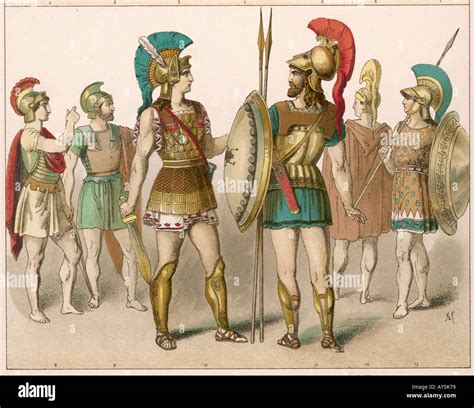The Maids of Athena, also known as the Arrephoroi, were an enigmatic and elite group of young women who served the goddess Athena in ancient Athens. Their duties and rituals remain shrouded in mystery, but scholarly research and archaeological discoveries have shed light on their significance within Athenian society.

Historical Context
The Maids of Athena emerged during the Archaic period (8th-6th centuries BCE) when Athens transitioned from a monarchy to a democracy. As the city-state gained prominence, the cult of Athena, the patron goddess of warfare and wisdom, grew in influence. The Maids of Athena became an integral part of this cult, tasked with performing sacred rituals and participating in religious processions.
Duties and Rituals
The Maids of Athena, typically four in number, were chosen from the most respected and wealthy families in Athens. They held this prestigious office for one year, during which time they lived in the Acropolis, the sacred citadel of the city. Among their duties were:
- Arrhephoria: A secret ritual involving the transportation of sacred objects from the temple of Athena Polias to a shrine below the Acropolis.
- Panathenaia: A major festival honoring Athena, where the Maids of Athena wove a sacred peplos (robe) for the goddess’s statue.
- Religious processions: The Maids of Athena participated in numerous religious processions, including the Great Eleusinian Mysteries and the Thesmophoria, a women-only fertility festival.
Symbolism and Significance
The Maids of Athena symbolized purity, chastity, and the unwavering devotion of Athenian women to their patron goddess. Through their rituals, they ensured the continued protection and prosperity of the city-state. Their office also represented the role of women in Athenian society, as they were entrusted with sacred duties and played a vital role in the religious life of the community.
Archaeological Evidence
Archaeological excavations at the Acropolis have uncovered evidence of the Maids of Athena’s presence. The Erechtheion, a temple dedicated to both Athena Polias and Poseidon, contains an inscription mentioning the Arrephoroi and their duties. Additionally, fragments of ceramics and figurines depicting young women carrying baskets have been found, providing visual representations of their sacred tasks.
Common Mistakes to Avoid
When studying the Maids of Athena, several common mistakes should be avoided:
- Confusing the Maids of Athena with Amazonian warriors: While both groups were female warriors, the Maids of Athena were not Amazons, who were mythological figures often associated with extramarital sexuality.
- Assuming the Maids of Athena had military roles: The Maids of Athena were primarily religious figures, not soldiers. They did not participate in combat or engage in military activities.
- Ignoring the social significance of their office: The Maids of Athena were not merely servants of a goddess but also representatives of the Athenian elite and the role of women in society.
How to Step-by-Step Approach
To gain a deeper understanding of the Maids of Athena, follow these steps:
- Read scholarly research: Consult academic sources and publications to gather information about the historical context, duties, and significance of the Maids of Athena.
- Visit the Acropolis: Explore the archaeological remains of the Erechtheion and other areas where the Maids of Athena performed their rituals.
- Attend a lecture or workshop: Participate in educational events organized by museums or cultural institutions to learn about the Maids of Athena from experts.
- Analyze iconography: Study ancient Greek pottery, sculptures, and other artifacts that depict the Maids of Athena, paying attention to their clothing, postures, and symbolism.
FAQs
1. Who were the Maids of Athena?
The Maids of Athena were elite young women who served the goddess Athena in ancient Athens, performing sacred rituals and participating in religious processions.
2. What was their age and selection process?
The Maids of Athena were typically between 7 and 11 years old. They were chosen from the most respected and wealthy families in Athens based on their physical appearance, purity, and devotion.
3. What were their duties?
The Maids of Athena were responsible for the Arrhephoria ritual, weaving the sacred peplos for the Panathenaia, and participating in various religious processions.
4. What is the significance of the Maids of Athena?
The Maids of Athena symbolized purity, chastity, and the unwavering devotion of Athenian women to their patron goddess. They represented the role of women in Athenian society and ensured the continued protection and prosperity of the city-state.
5. Is there evidence of their existence outside of Athens?
While the Maids of Athena are primarily associated with Athens, there is some evidence of similar cults in other Greek city-states, such as Sparta and Corinth.
6. How did the cult of the Maids of Athena decline?
The cult of the Maids of Athena gradually declined during the Hellenistic and Roman periods, as other religious beliefs and practices gained prominence.
7. What is the role of the Maids of Athena in modern culture?
The Maids of Athena continue to be a source of inspiration for artists, writers, and scholars, who explore their symbolism and significance in contemporary contexts.
Conclusion
The Maids of Athena were an enigmatic yet influential group of young women in ancient Athens. Through their sacred duties and unwavering devotion to the goddess Athena, they played a vital role in the religious life and social fabric of the city-state. Their legacy continues to fascinate and inspire, offering valuable insights into the beliefs, practices, and values of an ancient civilization.
